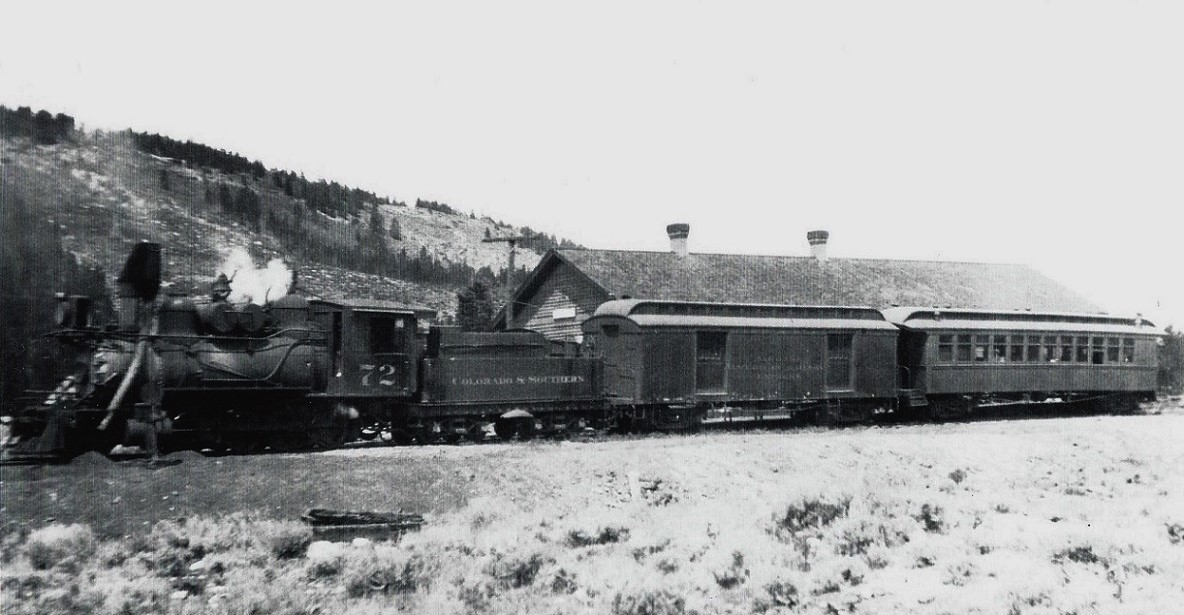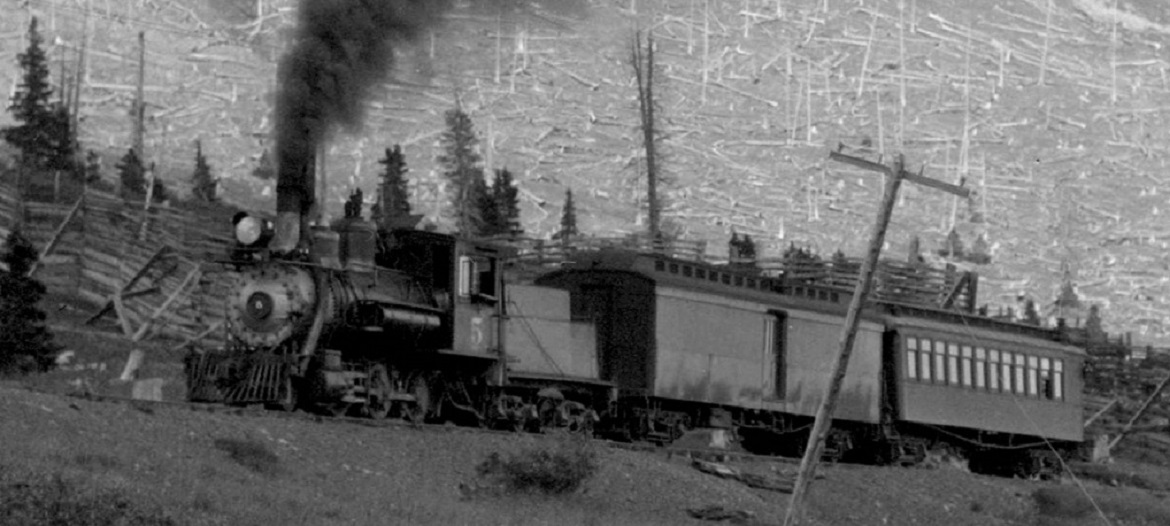Baggage Cars Sn3
|
I would like to have a baggage car for C&S so I have a question for you. What are you using for a baggage car in Sn3?
Steve
Steve Black
Springdale, AR
|
|
Hey, Steve,
Anyone wanting a C&S baggage car, in any scale, pretty much has to scratch build them. The only brass head end cars were the RPO 13 by Overland Models in HOn3 and Sn3. I have a couple of resin kits for D&RG combines, that I may be able to use the roof for a semi-scratch built baggage 4, or with cutting-splicing, perhaps the double door cars 1 or 2. I had hoped that Linn Moedinger might offer a C&S baggage or combine in S scale as a Shapeways 3-D print. https://www.shapeways.com/shops/narrow-gage-unlimited Linn still offers HOn3 prints of RPO 11 and business car 911. Alas, Linn no longer offers the Sn3 print of RPO 11. If all of us Sn3 C&S folks keep badgering him, perhaps he will reconsider. 
Jim Courtney
Poulsbo, WA |
|
That is what I suspected Jim. I'll have to see what I can come up with
I do wish Linn would still offer the 11. I moved too slow when he had them out before. Steve
Steve Black
Springdale, AR
|
|
Well, Steve, while you wait, you can join in the virtual build of RPO 11 here: http://c-sng-discussion-forum.41377.n7.nabble.com/C-amp-S-RPO-11-Linn-Moedinger-s-Shapeways-Print-in-Sn3-and-Hon3-td12427.html it was a fun build and come to think of it I did track down some brass for the stirrup steps at the side doors.
I think Mr. Moedinger is rightly distracted with another full-size project these days. I would love to add a baggage car to the fleet. My preference is car 1 or 2, though I have the sense they were the least used in later years. I like the short length (34' vs. 37') and the double doors. Dr. Courtney can refresh our memory on baggage service along the Colorado & Southern lines. Photos indicate the cars were used on trains in the 20s, and they appear on the fish trains. By the 30s RPOs 10-13 had sufficient capacity in the express compartment such that a baggage car was not needed on the Leadville passenger.
Keith Hayes
Leadville in Sn3 |
|
Yep, Keith, I'd like to have a baggage 1 or 2 for my 1924 passenger train through Leadville. In that decade, RPO service stopped at Como, but sometimes the RPO-baggage cars ran through, RPO section empty.
I'd like to recreate something like this:  or this: 
Jim Courtney
Poulsbo, WA |
|
The perfect passenger train, in my opinion!
 I know that Sn3 is not for everyone and it might not be the cheapest, but if you think it through, it might be more affordable than that giant 500 SF HO pike you will never get around to build. Most narrow gauge trains were short due to the steep grades and small locomotives (D&RGW pipe trains and 4-engine stock extras being the exception). Even the Shavano was only four cars plus a locomotive, and the Leadville train in later years was two or three cars. One could have a respectable model of one of the Clear Creek towns--Black Hawk or Idaho Springs with #70 a waycar and 20 cars or so. I have found that I can occupy a couple hours switching a five or six car train in Leadville: it is easy going and pleasant to stop to trade tales with a friend while doing so.
Keith Hayes
Leadville in Sn3 |
|
Keith
In 1924 315 / 316, predecessor to the Shavano, operated with regularly with 5 cars. Most frequently an extra baggage was added giving 6 cars total. Largest trains was 11 cars. On some 60 days a helper was required, especially out of Salida. During the winter months 6 cars usually required a helper. In the summer months 8 or 9 cars required a helper. Pat |
|
In reply to this post by Keith Hayes
Keith, I agree fully with you and will toss in one town to your list that I have never seen built but by itself would provide a lot of operational interest: Central City. Place it in the mid-1890s and you've got two warehouses, a beer warehouse, a mine, a lumber yard, coal and the yard around the freight station. And passenger service or even a waycar. In HOn3 I've roughly planned it in 24 linear feet almost to exact scale but it could be compressed easily. With more compromises a pretty interesting Sn3 variation could be built. A perfect 1-2 operator layout.
Dave Eggleston
Seattle, WA |
|
Dave, would you be interested in sharing your plan with us for central city...
Best, Todd |
|
This post was updated on .
Todd, I used the ICC Valuation map as a start, backdating based on photos and Sanborn maps and articles. I don't currently have a full plan drawn out, just notes of distinct portions that focus on details because what I learn keeps changing and I don't actually have a space for it so don't know the footprint. But Central is linear and really not that long and could be compressed further, though lose some character, by not modeling the block of brick structures between Sauer McShane's warehouse and the Zang beer warehouse.
What I'm thinking at the moment, looking at the ICC valuation map, and using its track numbers: Track 1 was a spur for a chute to the lumber yard below on Gregory put in c. 1902 so I wouldn't include it. Track 2 serves both the Central City mine (coal chutes to the boiler shed loaded from coal cars are visible in photos) and Sauer McShane's warehouse (which had a single chute and which was single story, not peaked-roof, prior to 1895, which I think would be interesting and better for dealing with switching). Track 3 serves Zang's beer (by 1895) and in one early photo there appears to be a chute, though they probably just rolled barrels after a while. Track 3 also serves the Hawley warehouse using a chute into the right half of the building. Like Sauer, it was single story until ca 1895, a benefit for switching. I'd love to have the original 1879 coal bins with their spur track on top, but I can't find a date for when they were removed. I know Black Hawk's were torn down around 1885/86 to make room next to the depot for other business and maybe the Central City one was torn down around this time. Late UPD&G period photos show an empty space here. The Valuation map shows coal bins, these were put in around 1905. As to the yard, I originally planned to follow the valuation map but research is showing that the C&S widened and lengthened and straightened the space when it put in the brick station in 1899. The cinder pit wasn't yet installed. Nor the scales. And the main and house tracks were flipped. There was definitely a stock corral and possibly a nascent oil facility. There are three pre-C&S photos of the yard I know of, two are late UPD&G and show a similar layout, while the third from around 1883-85 shows basically a passing siding in front of the freight warehouse and God knows what else because the photograph ends. All that said, I'll have a main track, passing track and house and team tracks but perhaps compacted. This is a very rough schematic of the idea, using the Valuation distances from switch 2 to the end of track this all fits relatively well in 16', plus a staging yard at the left end.  So...coal for Central City mine, hay and merchandise for Sauer, beer for Zang's, hay and feed and merchandise for Hawley's, lots of coal and other items to the team track, and an assortment of stuff to the freight house. And the occasional load of stock into town. Ore was the outbound traffic, loaded at the yard.
Dave Eggleston
Seattle, WA |
|
Thanks for share your thoughts. I will have to check my books and see what information I have about Central City... I don’t think I have seen the ICC map for CC...
Todd
Sent from my iPhone On Jan 14, 2021, at 7:16 PM, degg13 [via C&Sng Discussion Forum] <[hidden email]> wrote:
|
|
Thanks for share your thoughts. I will have to check my books and see what information I have about Central City... I don’t think I have seen the ICC map for CC...
You could do a search on here ....  http://c-sng-discussion-forum.41377.n7.nabble.com/Central-City-depot-tp6814p6836.html
UpSideDownC
in New Zealand |
|
Thanks for sharing that Chris.
I'm working off the ICC map I got from the CRRM as well as Sanborns from 1886, 1890, 1895 and 1900, and Google earth to get elevations roughly, but originally used Rick's drawing to get started many years ago. I'm sure there are other maps out there I've not seen. All the rest is heavily dependent on photos--books and DPL--and it's been quite fun to get these into a chronological progression. Backdating Central to the early-mid 1890s (and earlier) has been an interesting as the overall schematic retained its basic character from 1880 to 1927, just getting a bit more complex (or in the case of the coal dump spur removal, simplifying) over the years as the Central City mine, Sauer McShane and both beer warehouses came online, along with some yard changes and then finally the major upgrades to the yard in 1898-99. The lumber spur (track no. 1 on the map) around 1901-02 and the big coal bins around 1905 were the notable changes in C&S days. There just wasn't much space to expand outside the yard's linear quality! So it's about paring back things to when they were built. The extensive use of gravity chutes to feed the businesses is really interesting as a visual element of the place. A lot of mysteries remain for me...What was the oil depot like in the 1890s? What did the freight yard look like from 1880-1895? Was a proposed spur past the end of track for Nevadaville traffic ever implemented? The freight yard sat on the grounds of the Montana Mill and used that structure for a short time (1879/80) for freight and as an enginehouse before an arsonist burned it down, almost fully destroying engine 6 in the process--what was that arrangement? An 1860 print and at least two photos show the Montana before the railroad, and an early 1880s yard photo show ruins in the foreground but this bit of CC history may remain something for the imagination. I've only scratched the surface of this beast!
Dave Eggleston
Seattle, WA |
|
Thanks Chris! I forgot about the Gazette articles but will look them up. I have the 50 year collection DVD. I didn’t even get around to searching the forum yet either...😳😎
Todd
Sent from my iPhone On Jan 16, 2021, at 2:04 PM, degg13 [via C&Sng Discussion Forum] <[hidden email]> wrote:
|
«
Return to C&Sng Discussion Forum
|
1 view|%1 views
| Free forum by Nabble | Edit this page |

